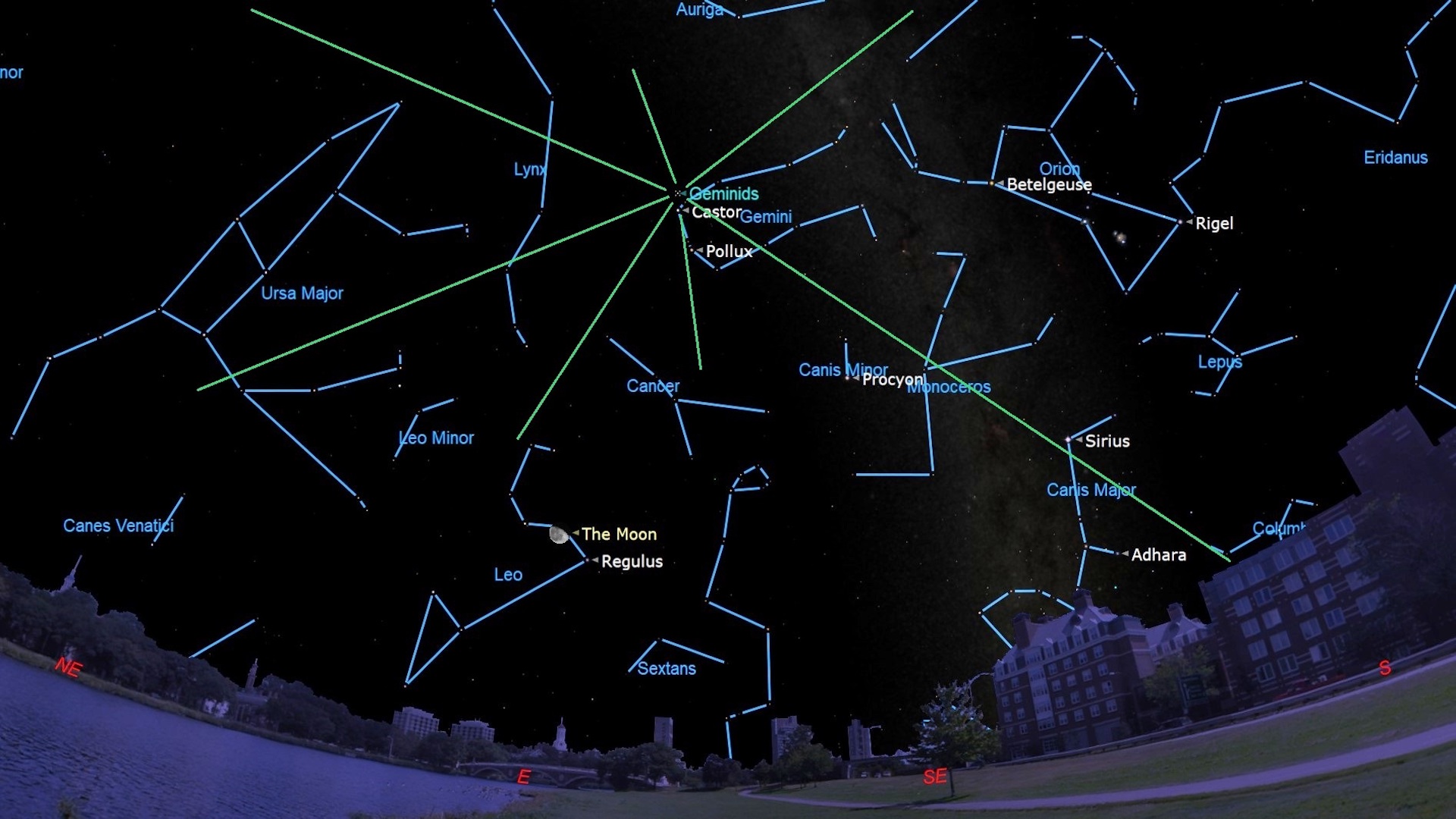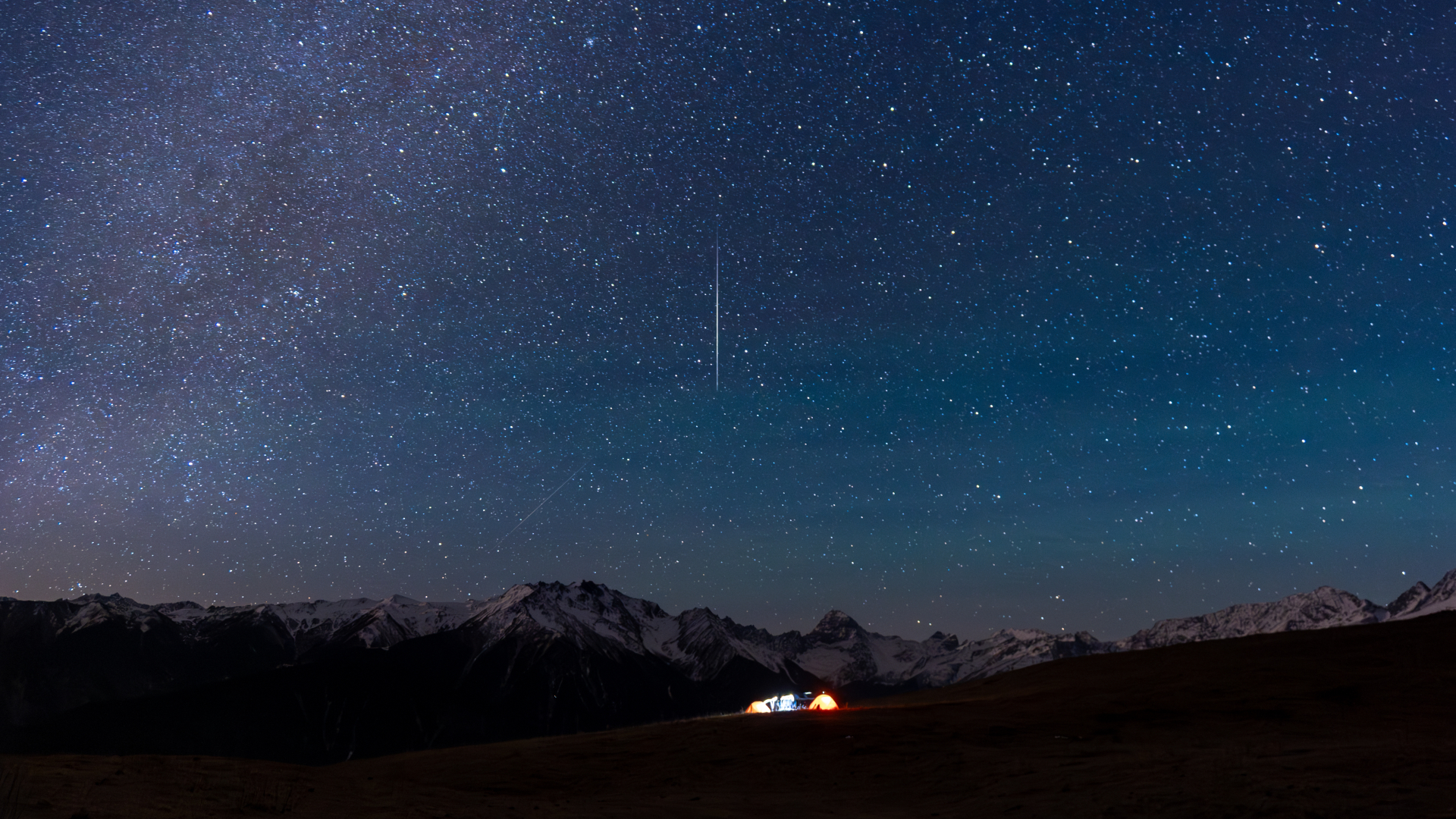The Geminid meteor shower peaks tonight. Here's how to see it
This is largely considered one of the best meteor showers of the year, but tonight's viewing conditions will be tricky.

Zip up those winter coats — one of the best meteor showers (if not the best) is predicted to peak tonight.
The Geminid meteor shower occurs when the Earth moves through the debris trail of the asteroid 3200 Phaethon. This year's spectacle began on Dec. 4, and the number of meteors streaking across the sky has been steadily growing as the days pass.
Tonight (Dec. 13), it's estimated that we'll be able to see between 60 and 120 meteors per hour, or one to two per minute, as the shower peaks. And that's a very high frequency, as far as meteor showers go. Given all the variables in tonight's night sky, the best time to look for the Geminids is after dusk and before moonrise, which will happen around 10:00 pm local time, per the American Meteor Society. And it's pretty much a one-shot deal — while the meteor shower will continue through Dec. 17, the number of meteors drops dramatically each day.
Related: Meteor showers 2022-23: Where, when and how to see them
As for the specific timing of the Geminids tonight, the highest frequency of meteors will actually occur in the morning — 8 a.m. EST (1300 UTC), according to In The Sky. Since the sun will be up then, the best viewing will likely be in the pre-dawn hours. To look for the meteors, all you have to do is look up. Though they'll all emanate from the constellation Gemini (hence the meteor shower's name), they can appear anywhere in the sky.
So what makes the Geminids one of the best meteor showers of the year? For starters, there's its frequency; only the Perseid meteor shower in August regularly competes with that frequency. Then, there's the fact that Geminid meteors are often slower and brighter than other meteors.
"Because Geminid meteoroids are several times denser than the cometary dust flakes that supply most meteor showers, and because of their relatively slow speed with which they encounter Earth (22 miles (35 km) per second), these December meteors appear to linger a bit longer in view than most," according to Space.com skywatching columnist Joe Rao. "Moving at roughly half the speed of a Perseid or Leonid, a Geminid fireball can be quite spectacular and dazzling enough to attract attention even in bright moonlight," Rao added.
Breaking space news, the latest updates on rocket launches, skywatching events and more!

Want to get a better look at the Gemini constellation? We recommend the Celestron Astro Fi 102 as the top pick in our best beginner's telescope guide.
But there's one big problem: visibility might not be so great. There's quite a bit of bad winter weather occurring across the country, so the night sky will be obscured for many. But even if the skies are clear where you are, the moon is another problem. It's in its waning gibbous phase at 70% brightness, which means all but the brightest meteors will be washed out by moonlight.
If you're looking to photograph the Geminid meteor shower, put down that cell phone camera and check out our recommendations for the best cameras for astrophotography and best lenses for astrophotography. And while the Geminids are best observed with the naked eye (you'll have the widest field of view, which means you'll have the best chance at spotting a meteor as it zips by), there's plenty else to see in the night sky. Take a look at our guides for the best binoculars and the best telescopes to get up-close views of other astronomical objects.
Editor's Note: If you snap the Geminid meteor shower and would like to share it with Space.com's readers, send your photo(s), comments, and your name and location to spacephotos@space.com.
Follow Stefanie Waldek on Twitter @StefanieWaldek. Follow us on Twitter @Spacedotcom and on Facebook.

Space.com contributing writer Stefanie Waldek is a self-taught space nerd and aviation geek who is passionate about all things spaceflight and astronomy. With a background in travel and design journalism, as well as a Bachelor of Arts degree from New York University, she specializes in the budding space tourism industry and Earth-based astrotourism. In her free time, you can find her watching rocket launches or looking up at the stars, wondering what is out there. Learn more about her work at www.stefaniewaldek.com.
